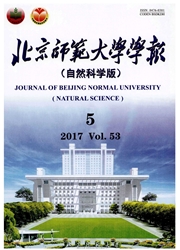

 中文摘要:
中文摘要:
本文选取雄性SD大鼠,随机分为4组:假手术组(Control)、假手术运动组(Control+Ex)、PD组(PD)和PD运动组(PD+Ex).于大鼠内侧前脑束注射6-羟基多巴(6-OHDA)建立单侧损伤PD模型,术后24h实施运动干预.在手术后第1周、第2周和第4周皮下注射阿朴吗啡(APO)评价PD模型可靠性.4周训练结束后进行圆筒与网格行为学测试,并利用高效液相色谱技术(HPLC)检测纹状体Glu浓度;采用免疫组织化学技术观察纹状体GFAP和GLT-1的表达水平.APO旋转行为测试和圆筒及网格行为测试结果显示,PD+Ex组大鼠行为功能较PD组显著改善(P〈0.05).PD+Ex组大鼠较PD组纹状体Glu浓度下降(P〈0.01),GLT-1表达显著上调,而GFAP的表达显著下调(P〈0.05).4周跑台运动干预可加速星形胶质细胞对Glu的摄取转运能力,降低纹状体Glu浓度,改善PD模型大鼠行为功能障碍.推测运动促进PD模型大鼠皮层-纹状体Glu能通路的突触可塑性可能也与星形胶质细胞对Glu的摄取转运功能有关.
 英文摘要:
英文摘要:
To study mechanisms associated with exercise effects on Parkinson's disease,we investigated changes in astrocyte glutamate uptake(glutamate level/GLT-1and GFAP expression).Sixty-four(64)adult male SD rats were randomly divided into 4groups:control(control),control with exercise(control+Ex),PD group(PD),PD with exercise(PD+Ex).6-OHDA was injected into the right medial forebrain bundle to establish a rat Parkinsonian model.At 24 hafter 6-OHDA injection,rats in the exercise group were forced to run on a motorized treadmill Apomorphine(APO)-induced rotational test was performed at first,second,and fourth weeks.For behavioral evaluations,cylinder and grid-walking tests were performed 28 days after surgery.High-performance liquid chromatography(HPLC)was applied to detect glutamate levels in striatum.Immunohistochemical staining was used to examine GLT-1and GFAP expression.Behavioral tests(APOinduced rotational test/cylinder and grid-walking tests)showed that exercise significantly alleviated movement disorders in Parkinsonian rats(P〈0.05).HPLC showed that compared with PD group,glutamate levels of PD+Ex group was lower(P0.05).GLT-1and GFAP immunohistochemistry showed that compared with PD group,GLT-1 expression of PD + Ex group increased significantly whereas GFAP expression markedly decreased(P0.05).Exercise therefore can enhance astrocyte glutamate uptake in striatum in Parkinson's disease,to remove excess glutamate in synaptic cleft,to reduce glutamate-mediated excitotoxic effect on striatum.Exercise-induced plasticity in corticostriatal glutamatergic pathway may relate to promoted astrocyte uptake.
 同期刊论文项目
同期刊论文项目
 同项目期刊论文
同项目期刊论文
 期刊信息
期刊信息
